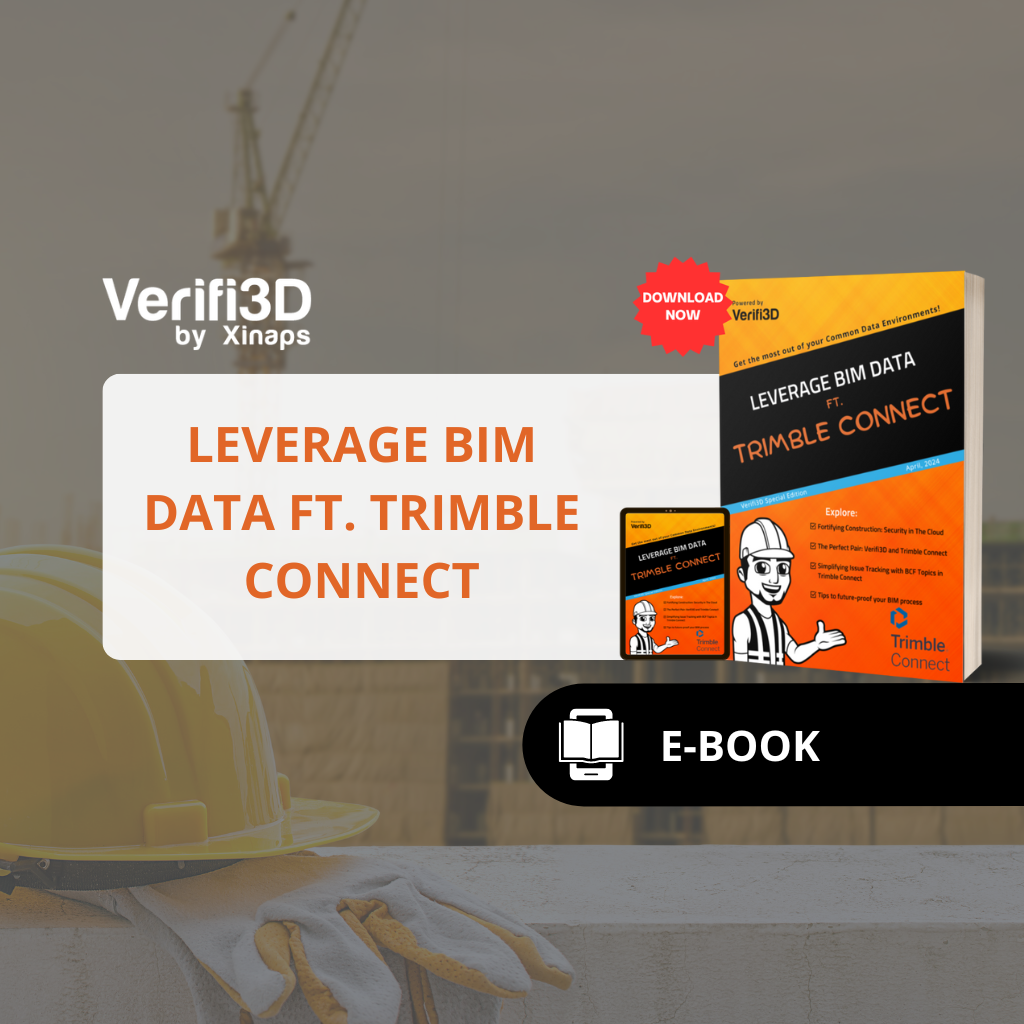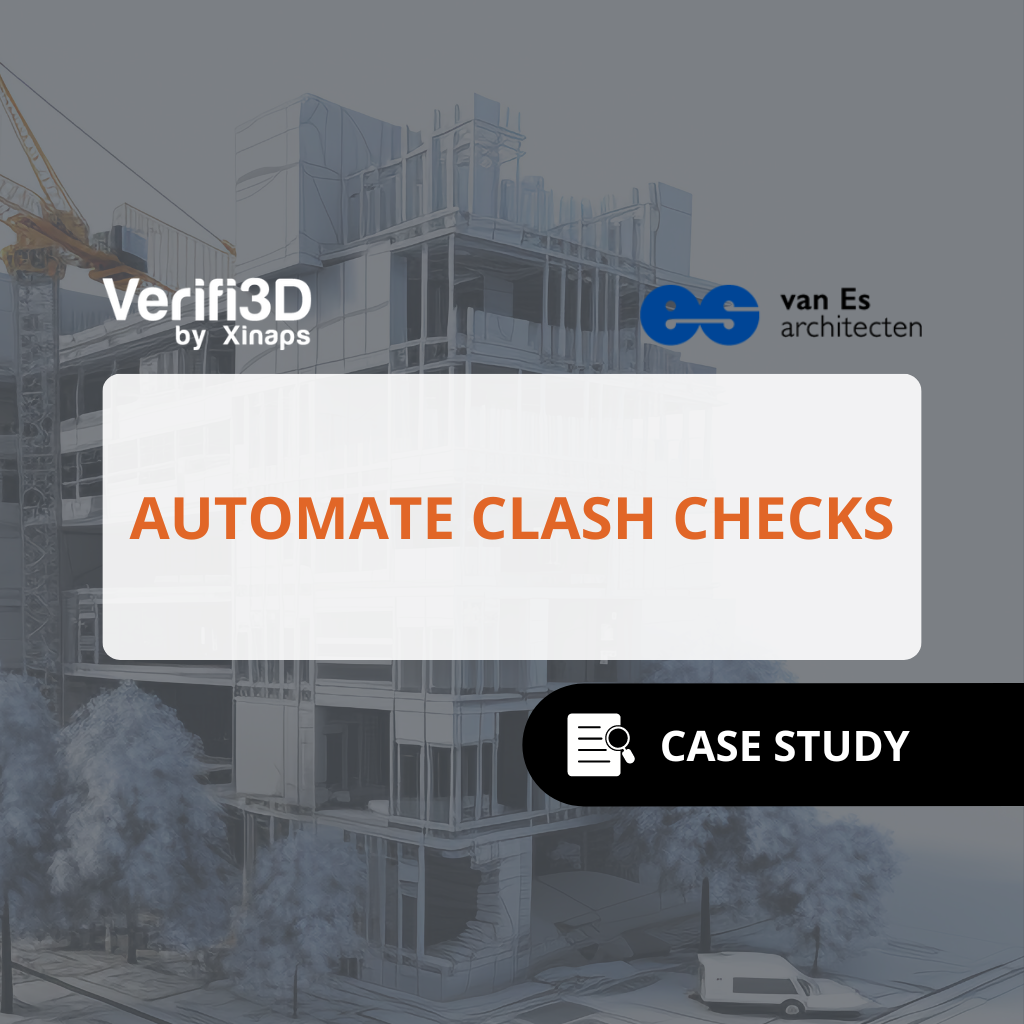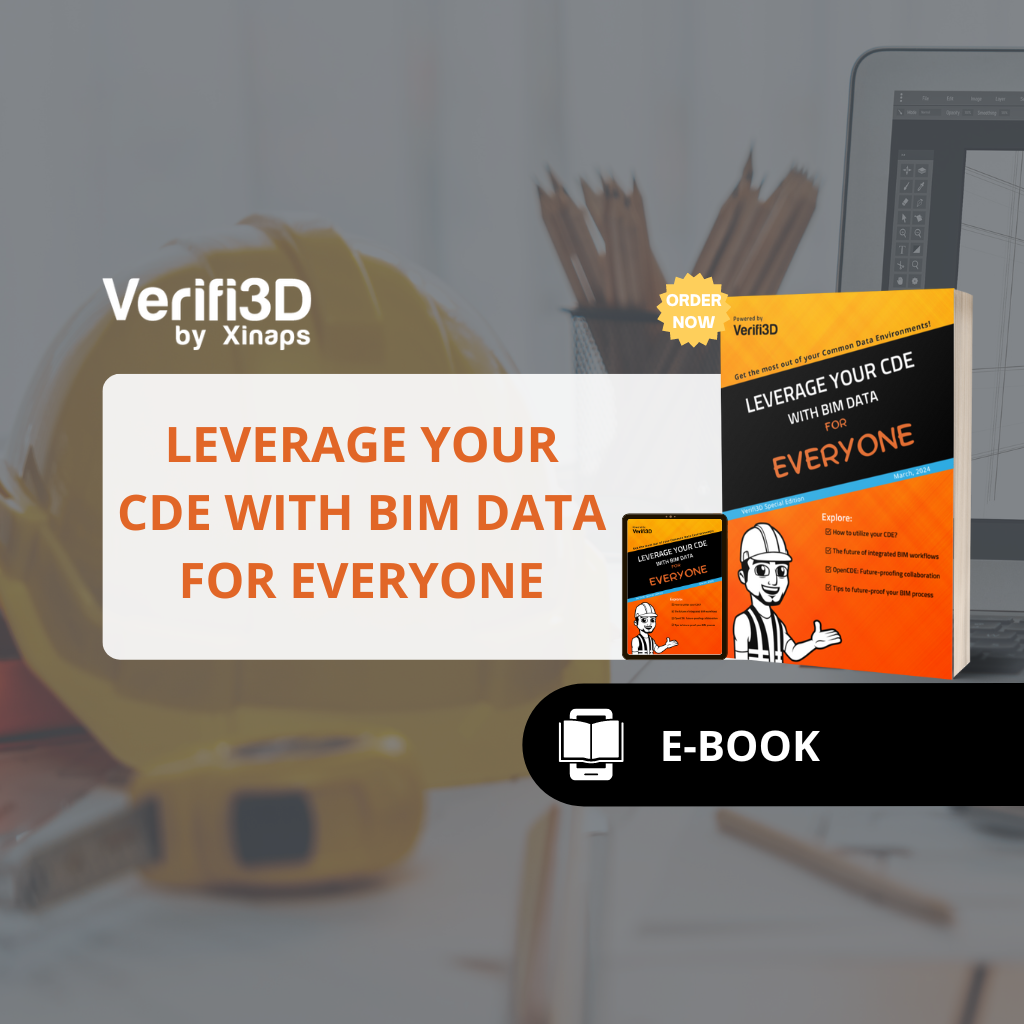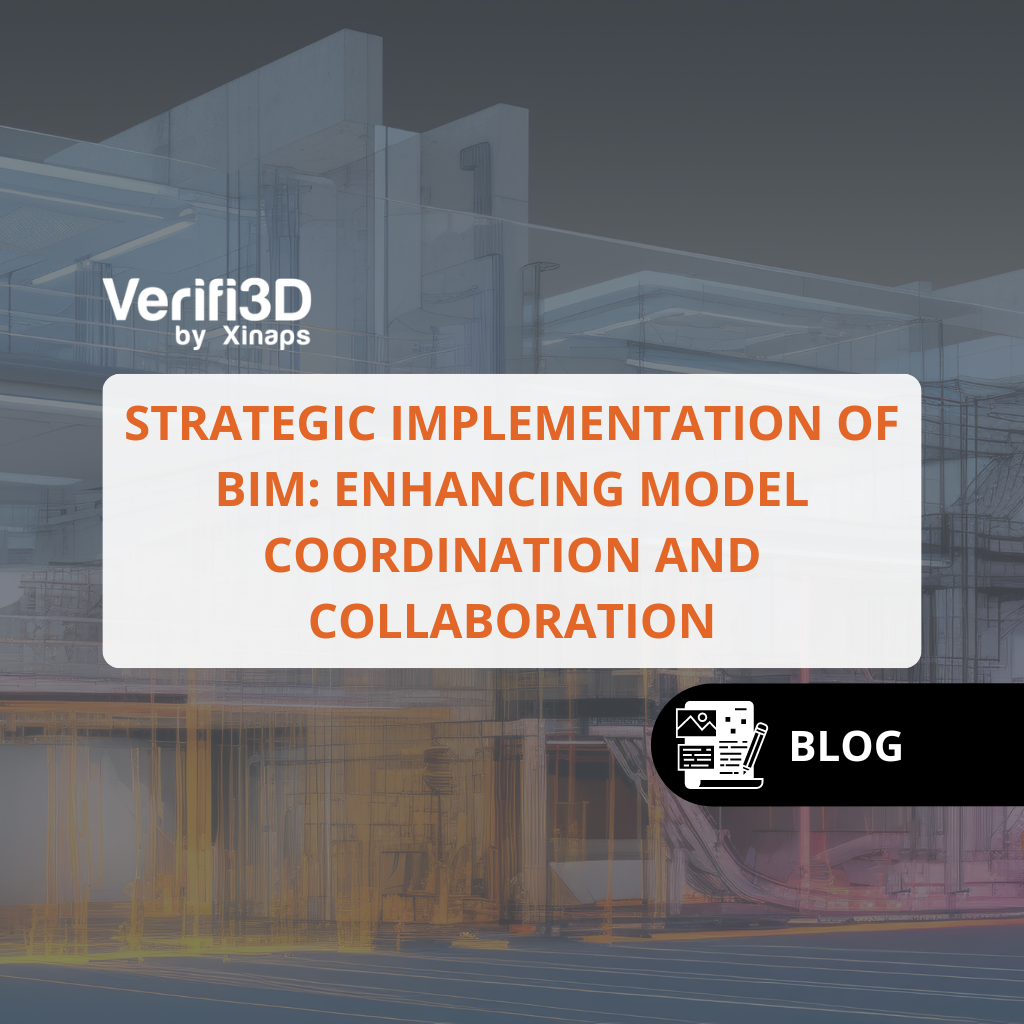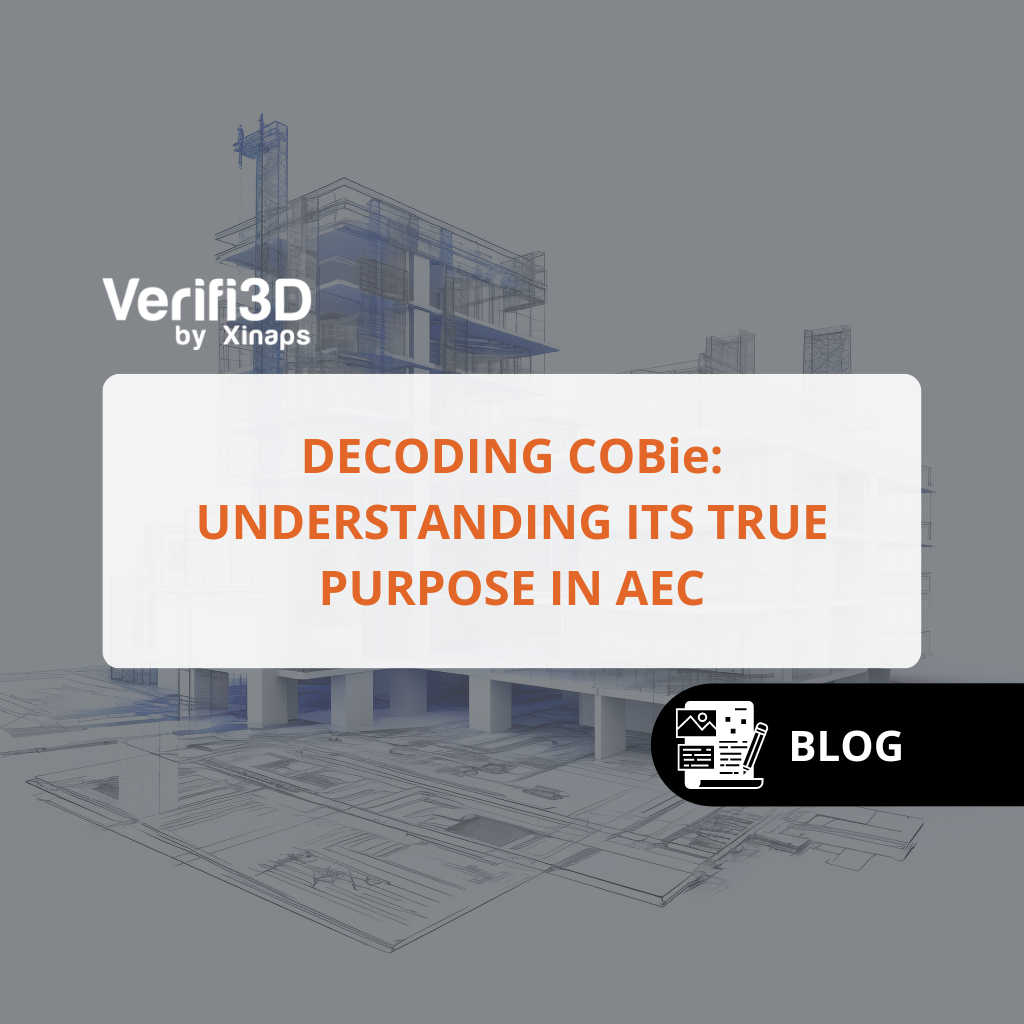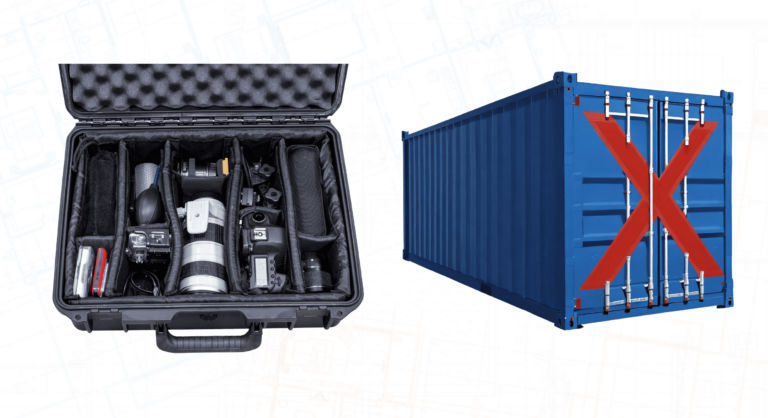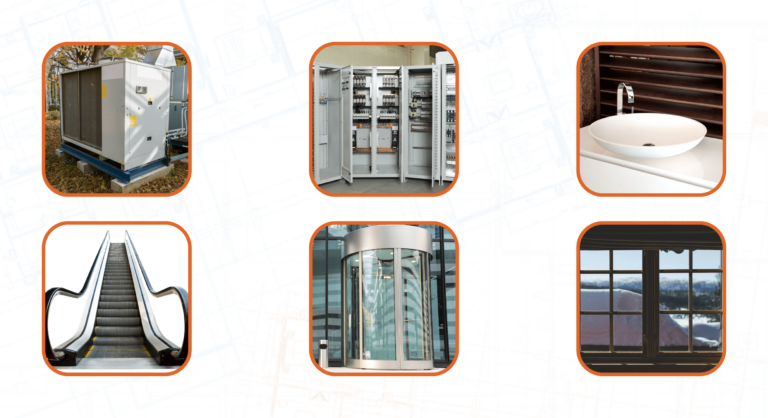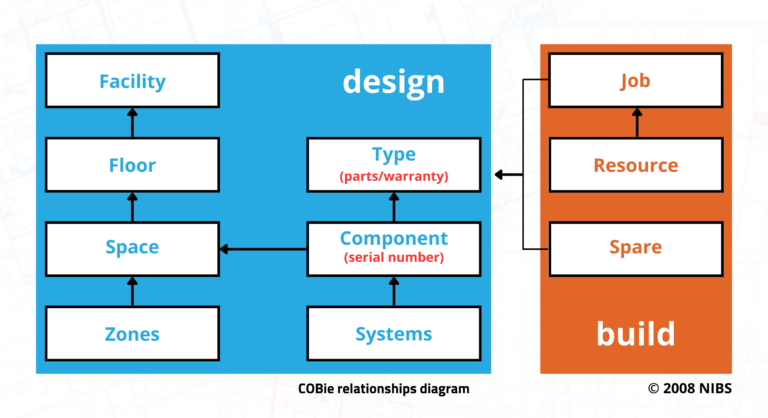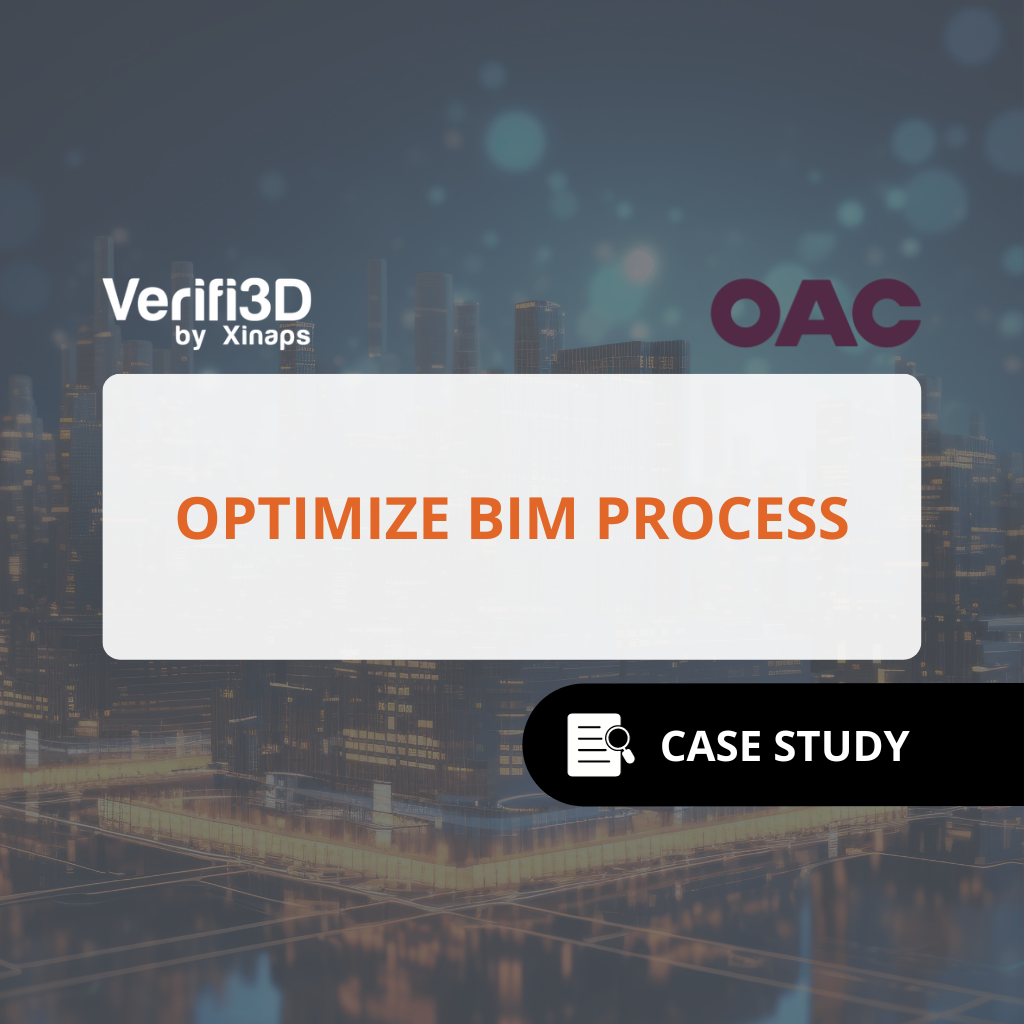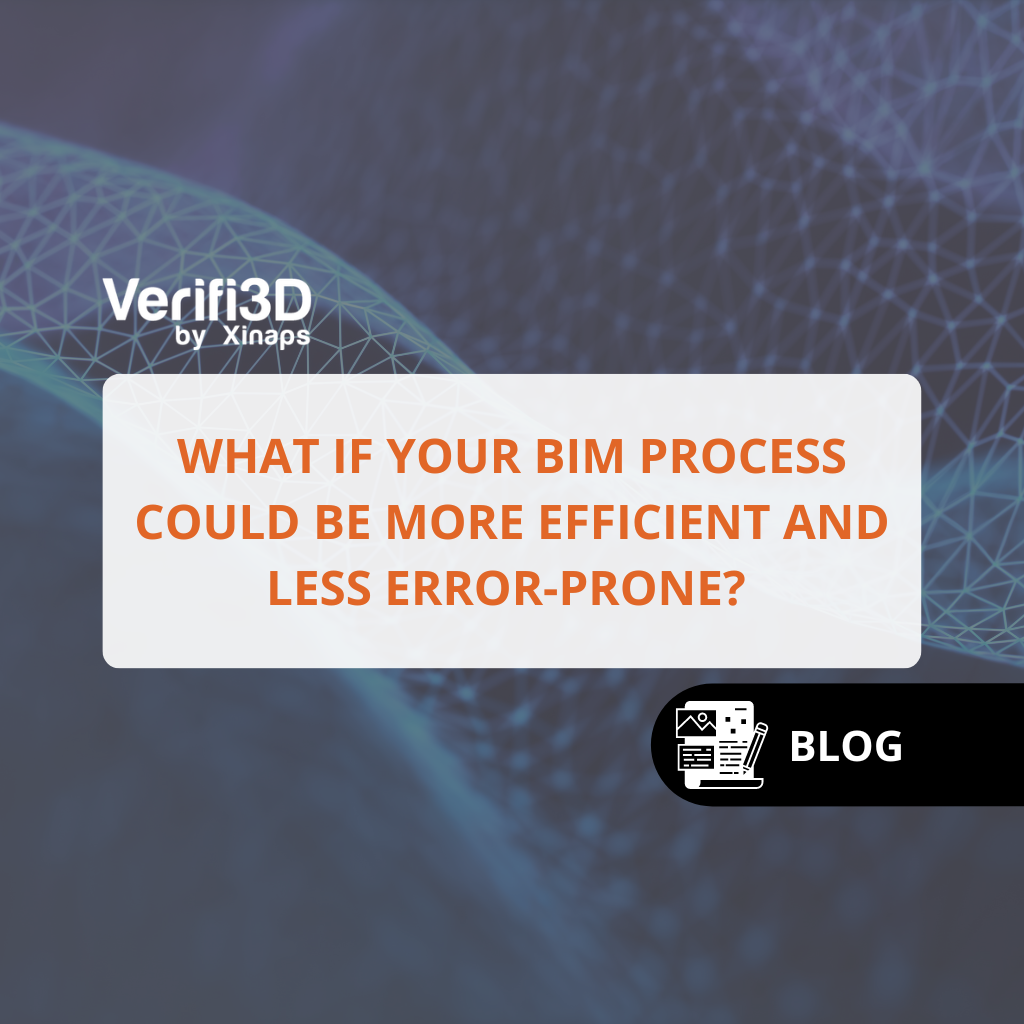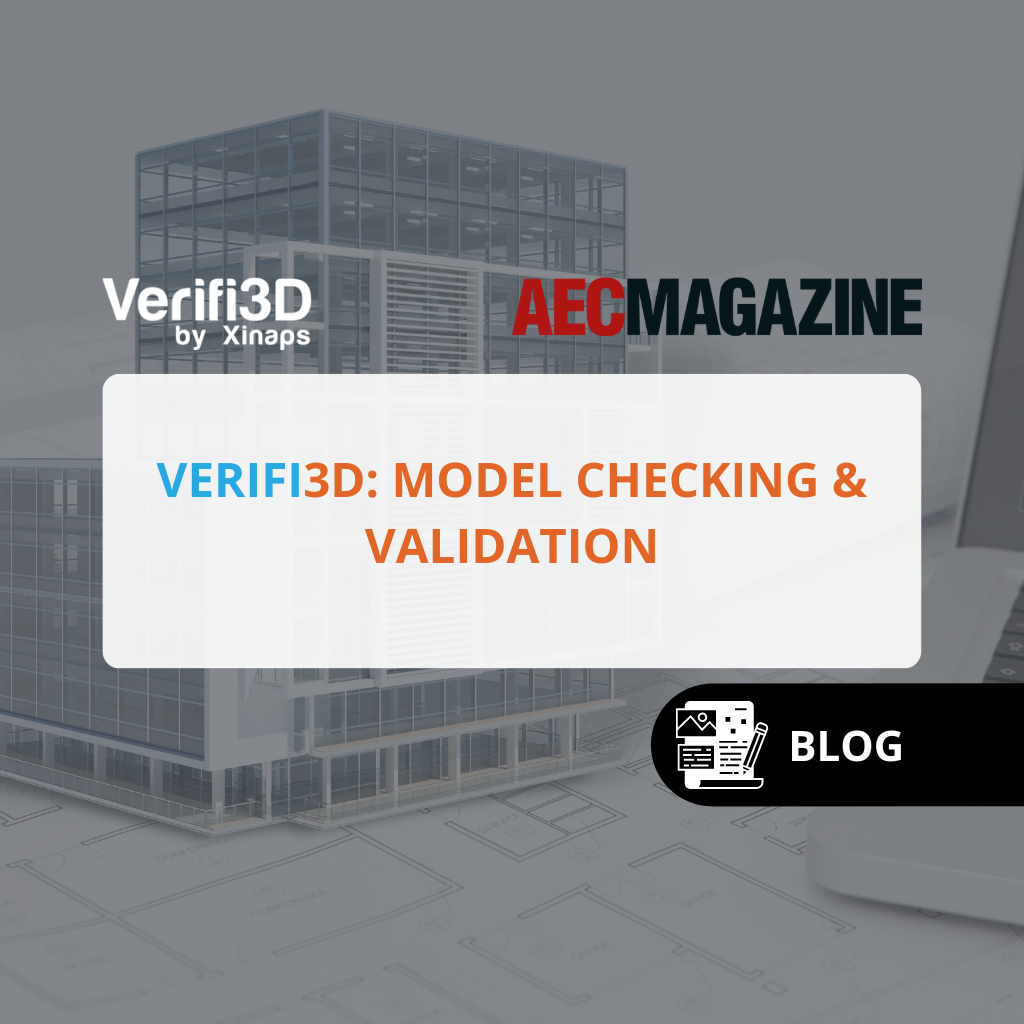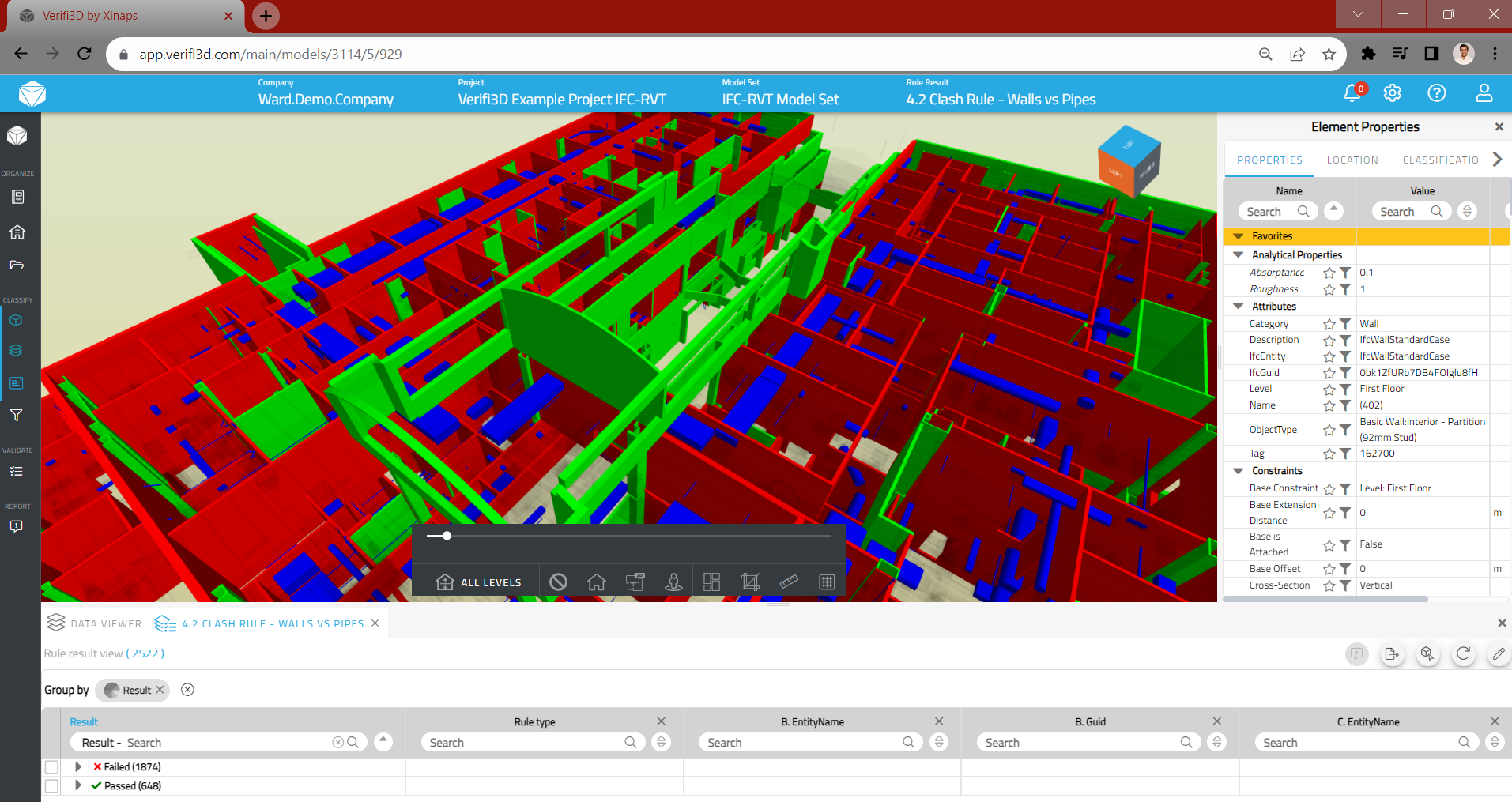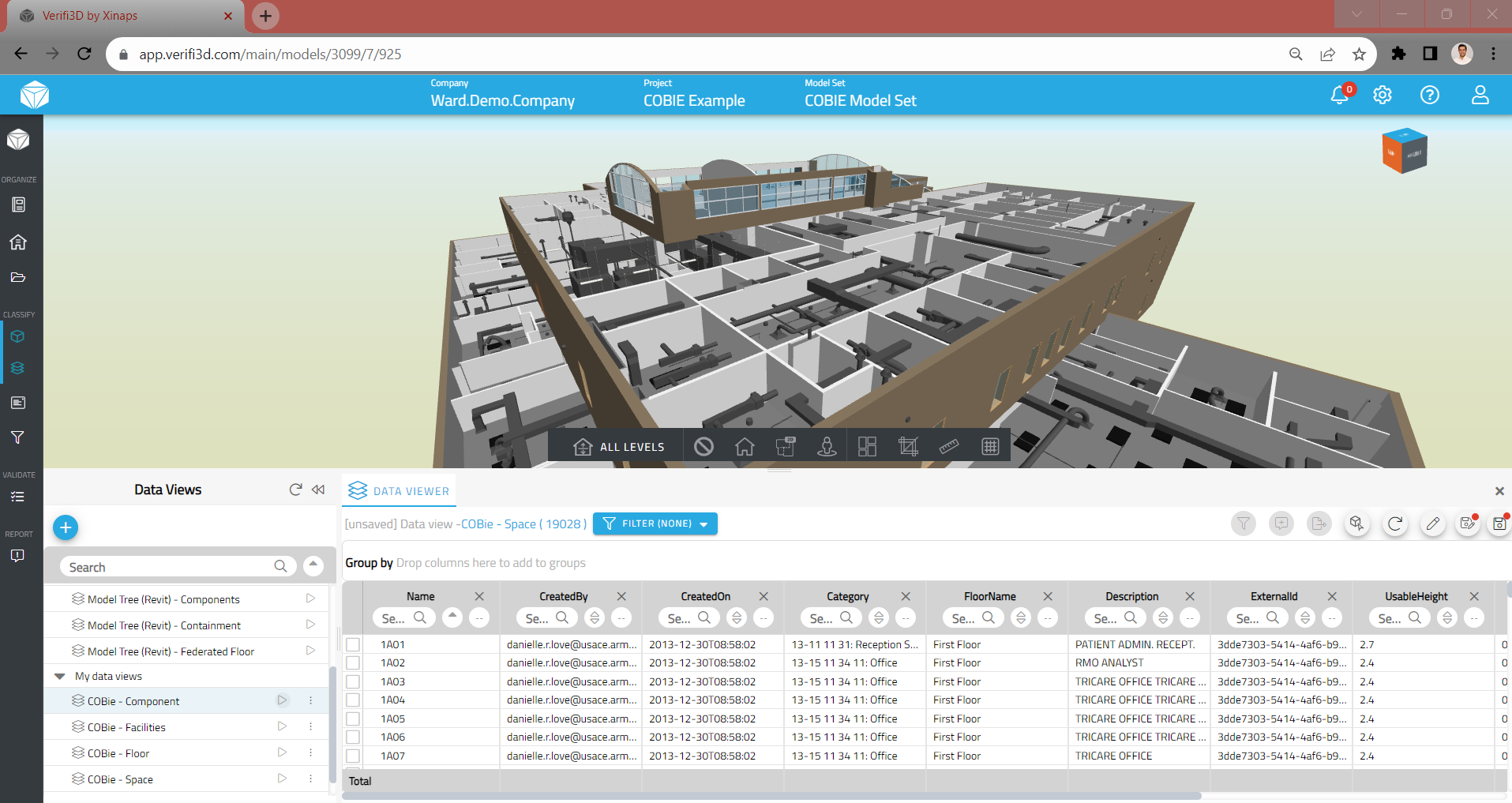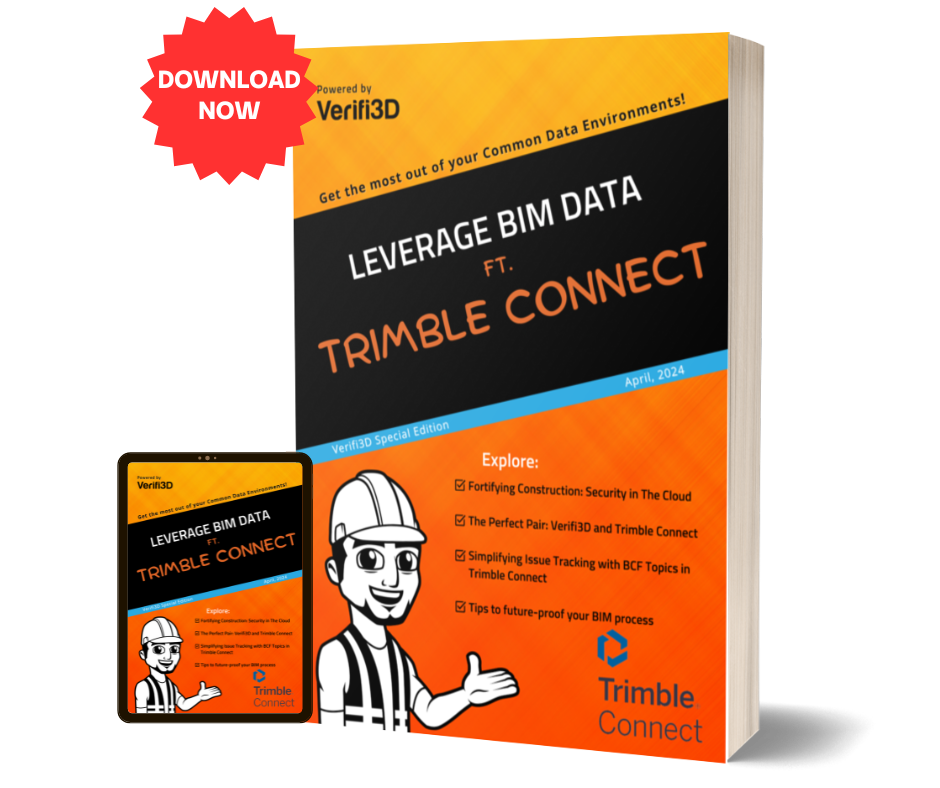
BESTEL UW GRATIS EXEMPLAAR
- Technische kennis verwerven
- Belangrijkste aanknopingspunten
- Tips & trucs

ONTVANG HET LEVERAGE BIM DATA FT. TRIMBLE CONNECT E-BOOK
Overzicht
Bouw- en engineeringprojecten zijn complex en dynamisch en omvatten meerdere workflows die effectief moeten worden gecoördineerd en beheerd. De enorme hoeveelheid informatie die bij deze projecten betrokken is, in combinatie met de verschillende bestandsformaten en losgekoppelde processen, kan echter leiden tot inconsistenties in de gebouwgegevens. Dit kan leiden tot aanzienlijke milieu- en financiële problemen, zoals schaalbaarheid, omzetverlies, verkeerd afgestemde projectprioritering en verhoogde koolstofemissies.
De speciale editie Leverage BIM Data Ft. Trimble Connect, Verifi3D is een gids voor BIM-modelcoördinatie en -controle voor een efficiëntere workflow bij het ontwerpen van gebouwen. Het boek is bedoeld om bouwontwerpteams te helpen het meeste uit hun Common Data Environment (CDE)/bestandsopslagplaats - Trimble Connect - te halen. Krijg inzicht in de toekomst van BIM modelcontrole en samenwerking en de rol van Verifi3D en Trimble Connect in het vormgeven ervan!
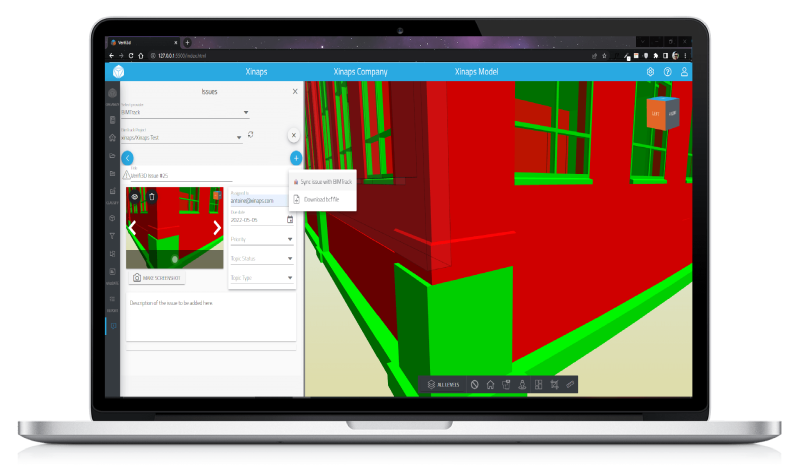
Lees dit E-Book voor praktisch advies over
- Constructie versterken: Beveiliging in de cloud
- De perfecte combinatie: Verifi3D en Trimble Connect
- Geavanceerde clashdetectie uitvoeren binnen Verifi3D en Trimble Connect
- Issuetracking vereenvoudigen met BCF Topics in Trimble Connect
- Het Verifi3D Exchange Portal voor sjablonen gebruiken
- Geavanceerde modelgezondheidscontroles
- Tips om je BIM-proces klaar te maken voor de toekomst
- En nog veel meer interessante onderwerpen
BOEKPRESENTATIE + WEBINAR
Kom naar de spannende boeklancering van "Leverage BIM Data Ft. Trimble Connect" tijdens ons webinar over "Clash detection with Trimble Connect and Verifi3D" met industrie-experts David Lash, Innovation Manager (Construction Sector) bij Trimble Inc en Ward Turkyeh, BIM Specialist & Customer Success Manager - Verifi3D.
Datum: 25 April 2024
Tijd: 17:00 CET/16:00 BST/11:00 AM EST


